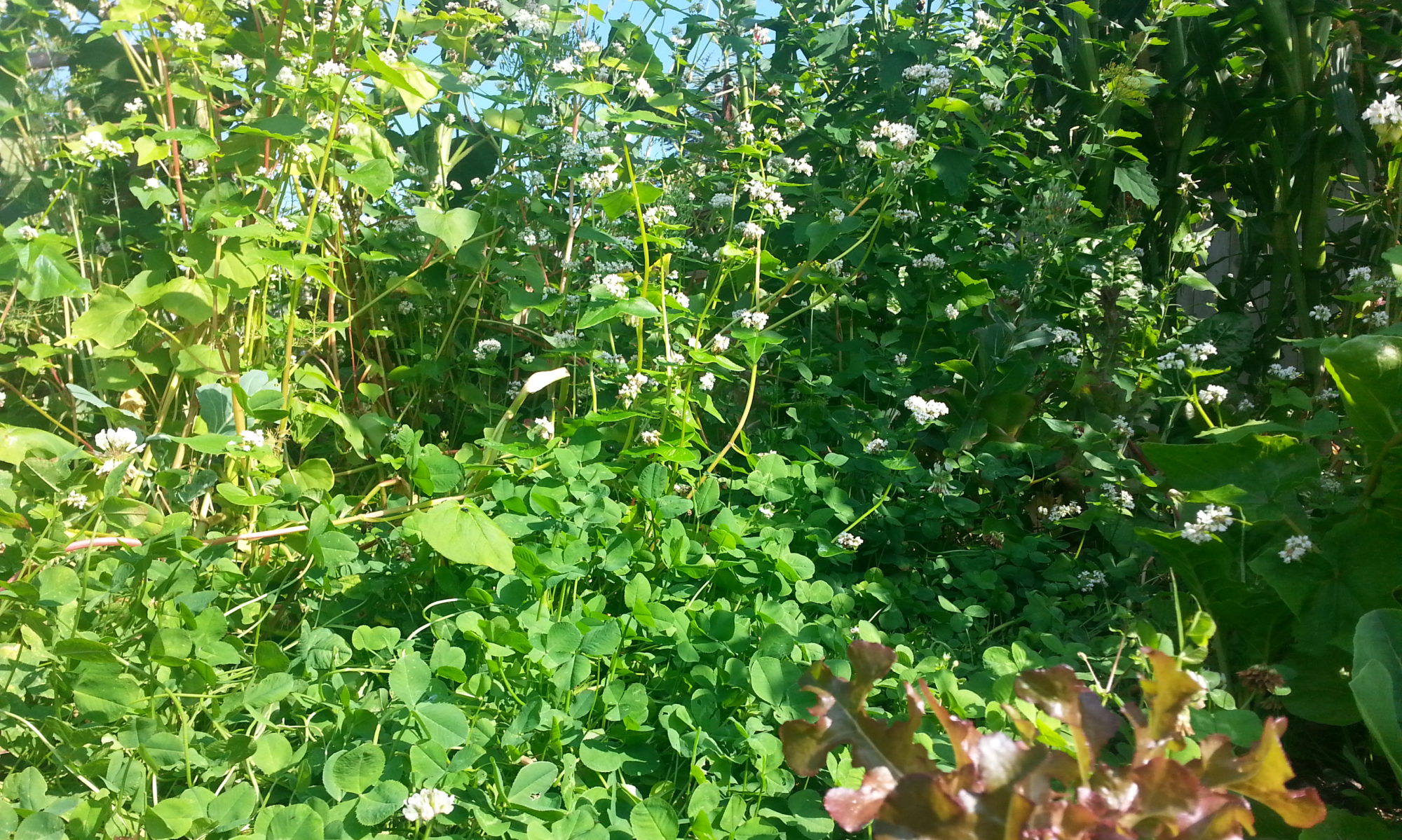More spring salads, sooner, with less work (a permaculture gardening approach)
It’s been a long winter and a late spring in coastal British Columbia. While our neighbours wait anxiously for their spring-planted greens to emerge and grow, here at Munson Manor we’ve been eating salads from the garden for two months, and our salad beds are now bursting at the seams.
Before I explain how we became so abundant in the spring greens department (there’s one key secret), have a look at the photos below to get a visual sense of contrast.
The first photo is from a garden nearby. It’s typical of virtually every backyard garden you might find in the area. As you can see, in the third week of May it’s mostly bare soil with rows of young seedlings starting to emerge.
Below this first photo are a few snapshots of our salad beds… taken on the same day. Have a look, and then I’ll explain how and why our gardening style produces such different results.
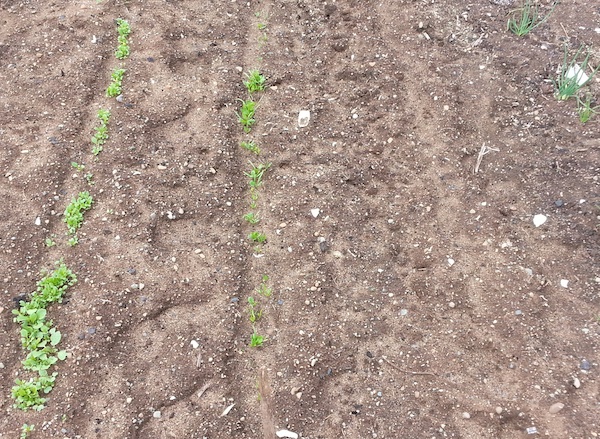
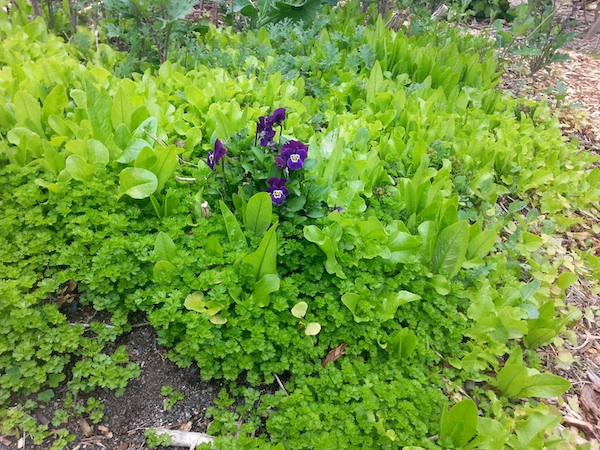
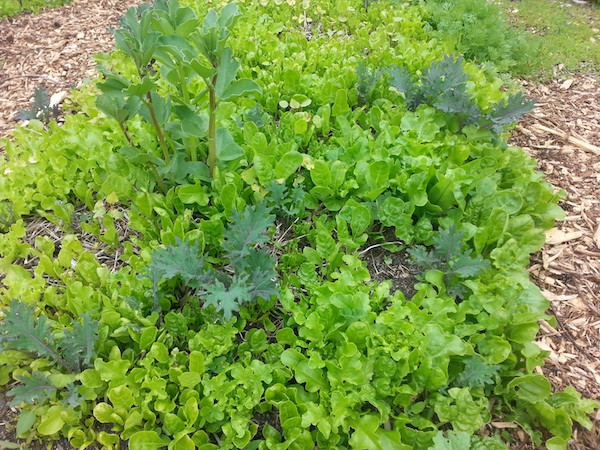
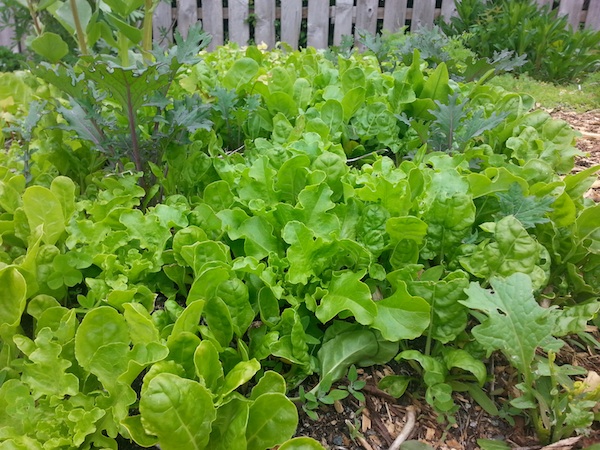
Like I’ve mentioned, the photo at the top shows a very typical garden bed for this area and this time of year. The three photos that follow – of three beds in our garden – are taken on the same day.
Why such a difference? How can we be harvesting lettuces, baby chard, arugula, kale, parsley, edible violets and more while our neighbours are watching their first greens barely break the surface?
We don’t have better sun exposure. We don’t fertilize. We don’t have special plastic covers or greenhouses. We don’t do any extra work. We don’t even dig our beds! In fact, in this case you could say the trick is that we do less. How can this be true?
Self-seeding: The secret to early greens
We didn’t sow any of the greens in these lush beds. They’re full of tender, yummy salad greens that sowed themselves last year! Our gardening style is based on the phenomenon of natural succession (if we’re feeling cheeky, we might also talk about “mixed canopy polyculture,” a topic for our book and maybe a future blog post).
We allow certain garden plants to complete their life-cycle, including setting seed (in the fall these seeding plants make our garden look spectacular, and VERY different from our neighbours’). Some of this seed we collect and sow following years, and some we allow to simply fall from the plants and find its way into the soil. This has many benefits, but early and abundant spring harvests are certainly one of the most welcome.
Twenty years of gardening has taught me that for those species so inclined (like the ones in the photos), self-seeded plants are generally faster growing and more vigorous than their planted or transplanted counterparts. For this reason and others, self-seeding and natural succession play important roles in our permaculture food forest garden.
We’ve refined our use of self-seeding and natural succession in the garden through years of experience end experimenting (and happy accidents). You can try it in your garden simply by leaving a few plants to set seed through the fall, and by refraining from turning the soil.
We’ll be exploring these concepts and techniques throughout this blog and in our upcoming book… check back often!
